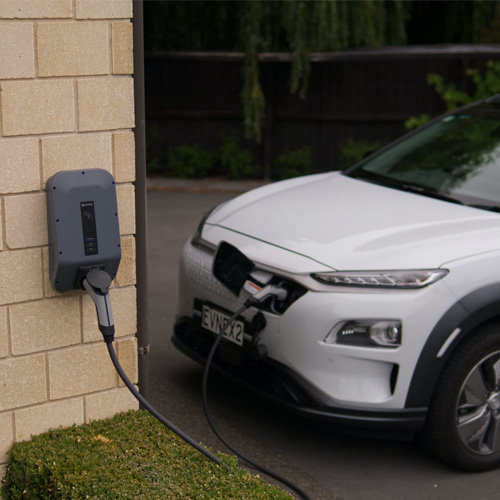The 2025 Budget is expected to introduce one of the biggest changes to electric vehicle taxation we’ve seen so far; a new 3p per mile road charge for EVs from 2028, on top of existing Vehicle Excise Duty (VED). If you drive an electric car, are thinking about switching, or run a company car fleet, this raises a simple but important question: how much more will you actually pay?
To help you cut through the headlines and see the real numbers for your own situation, we’ve built an interactive EV Road Tax Calculator. It compares:
- Your 2025 EV costs (with the new £195 VED already in place)
- Your projected 2028 costs including the proposed 3p per‑mile pay‑per‑mile road charge
- Running costs for petrol and diesel equivalents
- The impact of company car Benefit‑in‑Kind (BiK) if relevant
We explain how the proposed electric vehicle road charge works, what assumptions the calculator uses, and how to interpret your results, with a focus on real‑world, UK‑specific tax impacts.
What Is the Proposed 3p Per Mile EV Road Charge?
The Chancellor is expected to announce a new pay‑per‑mile road tax for electric vehicles in the 2025 Budget, with implementation pencilled in for April 2028 following a consultation.
Key features of the proposal currently reported:
- Rate: 3p per mile for fully electric vehicles (EVs)
- Hybrids: At a lower rate (1.5p per mile)
- Timing: New system expected to start in 2028, after consultation and legislation
- On top of VED: The charge would be paid in addition to the £195 standard VED that EVs will already pay from April 2025
- Payment model: Often described as a "VED+" pre‑payment system, where drivers:
- Estimate annual mileage at the start of the year
- Pay the per‑mile amount upfront alongside VED
- Receive a credit if they drive less than expected
- Pay a top‑up if they drive more
The policy is driven by a growing shortfall in fuel duty revenue as more drivers move from petrol and diesel to zero‑emission vehicles. Fuel duty currently raises around £25 billion a year. As EV adoption accelerates, the Treasury needs a replacement mechanism to fund roads and infrastructure - and a distance‑based EV road tax per mile is the preferred solution.
What Has Already Changed for EV Tax in 2025?
The pay‑per‑mile charge sits on top of several EV tax changes that are already in force or scheduled from April 2025:
- VED for EVs:
- First‑year rate of £10 for new EVs registered from April 2025
- Standard rate of £195 per year from year 2 onwards
- Previously exempt EVs (registered 2017 - March 2025) will now also pay £195
- Expensive Car Supplement: EVs with a list price over £40,000 pay an extra £410 per year for five years (from year 2 of registration)
- Company car Benefit‑in‑Kind (BiK): very low but rising for EVs:
- 3% in 2025/26
- 4% in 2026/27
- 5% in 2027/28 and currently expected to remain low into the late 2020s
For a broader view of how these measures fit into the expected tax changes, you can read our Budget 2025 tax rises analysis and our earlier Autumn Budget 2025 predictions, where we flagged road tax reform and EV taxation as likely revenue targets.
How Our EV Road Tax Calculator Works
The calculator on this page is designed to answer the most important question for drivers: "How will my annual motoring costs change if the EV road charge goes ahead?"
It does this by modelling:
- Your current‑style costs in 2025
- Your projected costs in 2028, with:
- Updated VED rules
- The proposed 3p per mile EV road charge (and 2p/mile for hybrids)
- Optional discount scenarios for rural drivers and essential workers
- Equivalent figures for petrol and diesel vehicles for comparison
Inputs you can control
You can customise the following key fields:
- Vehicle type - Electric Vehicle (EV), hybrid, petrol or diesel
- Vehicle list price - used to calculate:
- Eligibility for the expensive car supplement above £40,000
- Approximate company car BiK where applicable
- Annual mileage - essential for working out the:
- Pay‑per‑mile charge in 2028
- Fuel or electricity cost
- Registration year - before April 2025 or from April 2025 onwards
- Fuel/electricity cost per mile - you can enter your own figure, or leave at £0 to use automatic defaults (e.g. ~5p/mile for EV, ~14p/mile for petrol)
- Insurance and maintenance - annual figures (with guidance ranges for EV vs ICE)
- Company car toggle - switch on BiK if your car is provided by your employer
- Income tax rate - 20%, 40% or 45% for BiK calculations
- Scenario flags - tick if you’re a rural/high‑mileage driver and/or an essential worker. The calculator then shows a hypothetical 25% discount on the per‑mile rate so you can model potential consultation outcomes.
What the calculator shows you
Once you’ve entered your details, the calculator automatically refreshes to show:
- A line‑by‑line comparison of:
- VED (road tax)
- Expensive car supplement
- Pay‑per‑mile charge in 2028
- Total road tax
- Fuel/electricity costs
- Insurance & maintenance
- BiK tax (if company car selected)
- Total annual cost
- An at‑a‑glance "Impact" column showing whether each component is higher, lower or unchanged in 2028
- A separate table comparing your EV or hybrid against:
- A petrol car with the same list price
- A diesel car with the same list price
- A coloured Overall Impact box summarising the net change:
- If your total annual costs in 2028 are higher, you’ll see a red warning with the extra amount
- If they are lower (for example, if fuel savings outweigh new road tax), you’ll see a green saving figure
- A frequency switcher so you can view costs per year, per month, 4‑weekly, fortnightly or weekly - useful if you budget based on salary frequency
Example: How Much Could the EV Road Charge Add to Your Bill?
Let’s take a simplified example: an electric car with a £35,000 list price, doing 10,000 miles a year, registered in April 2025 or later.
With the default assumptions in the calculator:
- 2025:
- VED moves towards the £195 standard rate for EVs
- No EV pay‑per‑mile charge yet
- Fuel (electricity), insurance and maintenance reflect typical current‑market costs
- 2028:
- VED at £195
- Pay‑per‑mile EV road charge of 3p per mile:
- 10,000 miles × £0.03 = £300 per year
- Total road tax (VED + per‑mile) of around £495 per year, plus any expensive car supplement if the list price is over £40,000
In most scenarios the calculator will show that, even with the EV road charge, an electric vehicle’s overall total cost of ownership can still be lower than petrol or diesel, particularly if:
- You do a reasonable annual mileage (so fuel savings are meaningful)
- You can access cheap home or off‑peak charging
- You benefit from low BiK rates through a company car or salary sacrifice scheme
Rural Drivers and Essential Workers - Why We Include Discount Scenarios
One of the strongest criticisms of the proposed EV road tax per mile is that it may hit rural drivers and essential workers hardest. These groups often:
- Need to drive farther and more frequently
- Have fewer realistic alternatives (e.g. weak public transport)
- May already face higher fuel and charging costs
While the government has not yet confirmed any specific reliefs, the consultation is expected to consider fairness measures such as:
- Lower per‑mile rates or discounts for certain groups
- Regional or rural adjustments
- Exemptions or reliefs for key workers
To help you explore how these EV road tax discount scenarios might work in practice, our calculator includes simple toggles for:
- "I am a rural/high‑mileage driver (potential discount scenario)"
- "I am an essential worker (NHS, care, etc. - potential discount scenario)"
When either is checked, the calculator applies a hypothetical 25% discount to the pay‑per‑mile rate (so 3p becomes 2.25p, or 1.5p becomes 1.125p), allowing you to see:
- How much such a discount would actually save you in pounds per year
- Whether it would be enough to keep an EV financially attractive for your circumstances
Company Cars, BiK and Salary Sacrifice
The calculator also supports company car Benefit‑in‑Kind modelling. If your car is provided by your employer, BiK can be a major part of the overall tax cost.
For company EVs, the Budget has kept BiK rates low and relatively predictable compared to petrol and diesel. In the calculator we assume:
- EV BiK: 3% in 2025, rising to 4% then 5% and remaining low thereafter
- Hybrids: simplified BiK assumption around 15% (actual rates vary by CO₂ and electric range)
- Petrol/Diesel: simplified average BiK assumption of around 30%
By combining BiK with the EV road charge modelling, you can see:
- How much the EV road tax per mile changes your overall company car package
- Whether a petrol or diesel company car would really be cheaper once BiK is factored in
- How EVs still often deliver a significant tax advantage when provided via salary sacrifice schemes
How to Use the EV Road Tax Calculator Effectively
To get the most accurate and useful results:
- Use your real mileage - check your last MOT certificate or telematics app to see roughly how many miles you’ve driven over the last year.
- Adjust fuel/electricity costs - if you know your home tariff, public charging costs or petrol/diesel spend, overwrite the default pence per mile figures.
- Don’t forget maintenance - EVs usually have lower servicing costs. If you have a service plan or warranty add‑on, include that in your maintenance estimate.
- Toggle company car and tax rate - if you have a work car or use salary sacrifice, make sure the BiK section reflects your actual tax band.
- Swap between yearly/monthly/weekly views - once the totals are calculated, use the frequency switcher to see the impact in terms of your actual budgeting cycle.
Will EVs Still Be Worth It After the 2028 EV Road Charge?
The calculator is deliberately neutral - it doesn’t tell you what to buy, it simply shows how the proposed EV road charge changes the numbers for you. However, most realistic scenarios continue to show:
- EVs retaining a running cost advantage over petrol and diesel, thanks to cheaper fuel and lower maintenance
- Company EVs, in particular, continuing to offer major tax savings via low BiK rates
- High‑mileage drivers still benefitting strongly from the fuel savings of EVs, even after accounting for 3p per mile road pricing
That said, the combination of:
- £195 VED
- £410 expensive car supplement (for cars over £40,000)
- 3p per mile (or 1.5p for hybrids) EV road tax per mile
means that the headline "tax‑free EV" era is definitively over. If you are on the fence about switching, running your own numbers with the calculator is now essential.


